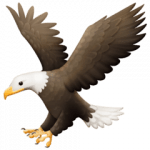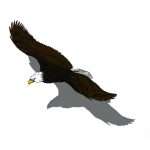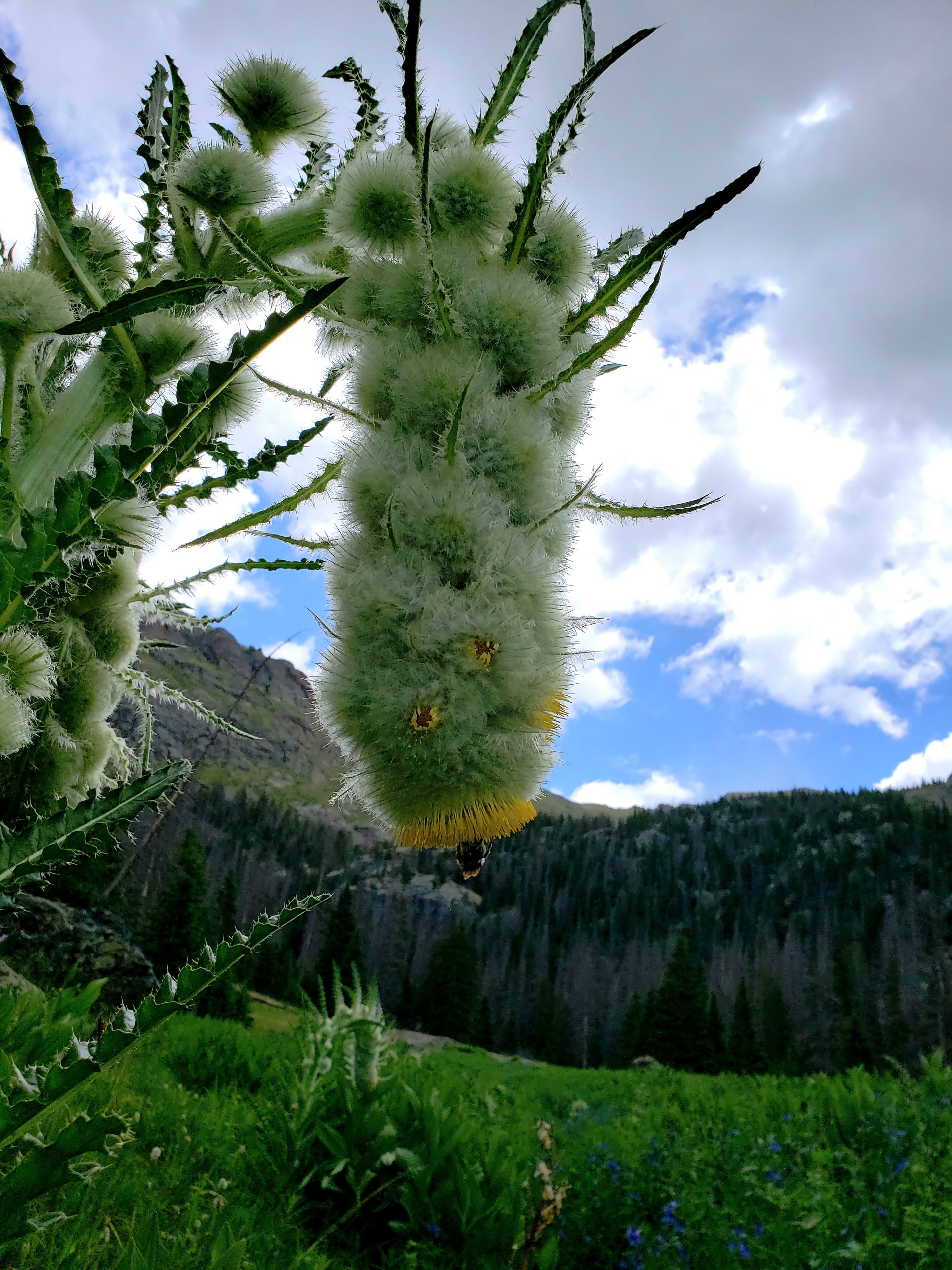by Carol T. English
When I was a young kid, I clearly remember my beloved Welsh pony eating thistle heads while I was riding him. From my vantage point I could see his soft lips stretch away from his teeth as he carefully bit down, snipped off, chewed, and swallowed the entire flowerhead. It was obvious to me this was a tasty morsel, and quite the delicacy for my pony. At ten years old this entire scene fascinated me. Thistles still fascinate me, especially the native ones.
While hiking this spring and summer in the Sangre de Cristo Mountains, I sadly came upon two beautiful native thistle plants that had been mangled by something. I do not know for sure, but I assume someone killed the thistle thinking it was a bad noxious prickly weed. Yes, it is true, Colorado is home to five invasive-not-so-welcome-thistles; however, Colorado is also home to nearly 20 native thistles including at least four that are quite rare. The invasive thistles can be extremely hard on native plant communities. They are very bossy and will take over entire landscapes creating monocultures, pushing out our precious native plants, and lowering the diversity in an ecosystem.
If you would like to learn to identify the noxious thistles, they include Canada thistle, bull thistle, musk thistle, plumeless thistle, and scotch thistle. Look these up online to identify them and learn how to manage them.
The San Luis Valley is home to at least 8 native thistle species including prairie thistle-Cirsium canescens, Fish Lake thistle-Cirsium clavatum, Eaton’s thistle-Cirsium eatonii, yellowspine thistle-Cirsium ochrocentrum, Parry’s thistle-Cirsium parryi, elk thistle-Cirsium scariosum, mountain thistle-Cirsium scopulorum, and wayleaf thistle-Cirsium undulatum. Thistles belong to the sunflower family-Asteraceae, and the inflorescence, or flowering portion of the plant, is a head of many flowers, sometimes over 100 flowers! There are two kinds of flowers in the heads including ray flowers—what we think of as petals on a big sunflower, and/or disk flowers—tiny disk-shaped flowers in the middle of the head (where sunflower seeds are formed). Some flowers in this family, such as thistles, only have disk flowers. Thistles are in the genus Cirsium which is Greek for swollen vein for which the thistle is considered a remedy (W. Weber, Colorado Flora Eastern Slope).
And as a matter of fact, Indigenous People around North America used thistles for food and medicine. The Lakota call thistle thokaku. “They peel the root and young stems and eat them raw or cook them in soups and stews. In the Southwest, Cirsium neomexicanum is used as an eye medicine. An infusion of the root is dropped into the eyes. An infusion of the entire root is taken for chills and fevers.” (E. Salmon, Iwigara—The Kinship of Plants and People). And of course, if you eat artichokes, you are eating a type of thistle.
Ecologically thistles are extremely important for pollinators including native bees, butterflies, moths, and even flies. The large heads of thistles and other sunflowers provide a landing area for pollinators to easily rest and move around while they quickly drink nectar and gather pollen. Recently, using DNA studies, a new species of thistle was discovered by Dr. Jennifer Ackerfield who heads the natural history collection at the Denver Botanic Gardens. The thistle is named after Jennifer’s botany mentor Vicki Funk. So appropriately the common name is Funky thistle, and the Latin name is Cirsium funkae.
If you are adventurous and energetic in July and early August, hike up high into the subalpine and you too will find the Funky Thistle! Be nice to it because it is native and evolved on this planet long before us humans arrived (https://coloradosun.com/2022/02/15/funky-thistle-new-species/). Sit and watch our native thistles for any amount of time, you will be amazed at the number and diversity of native pollinators that feed and pollinate these amazing plants!
If you have any native plant questions, please email me at slvchapterpresident@gmail.com.
Also check out the Colorado Native Plant Society, conps.org, for programs I will be giving here in the future all about native plants, and quite often about pollinators as well.
Photo: The Funky Thistle Cirsium funkae grows high in the southern Rocky Mountains.


